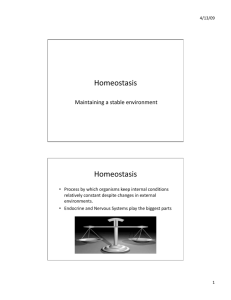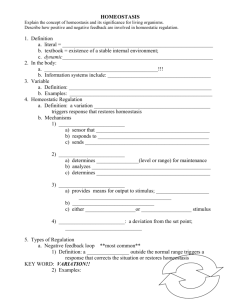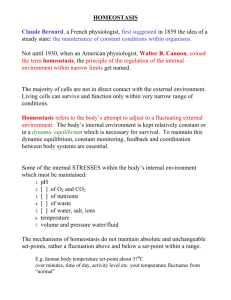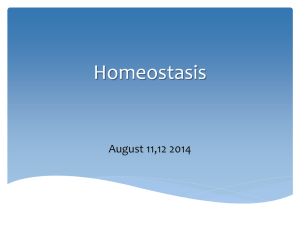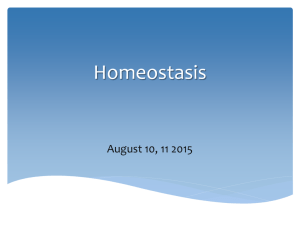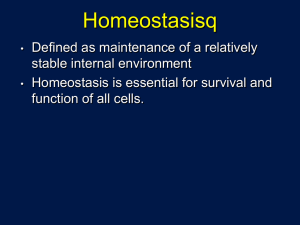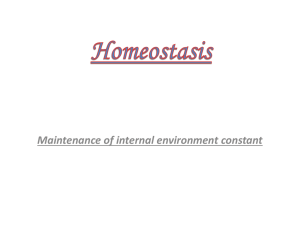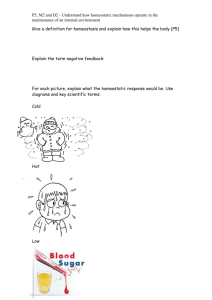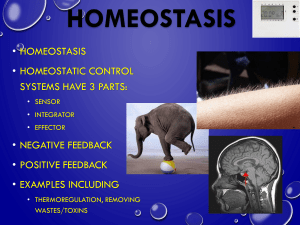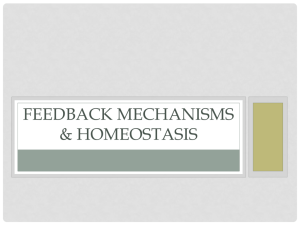9.2: Homeostasis and Feedback Mechanisms
advertisement
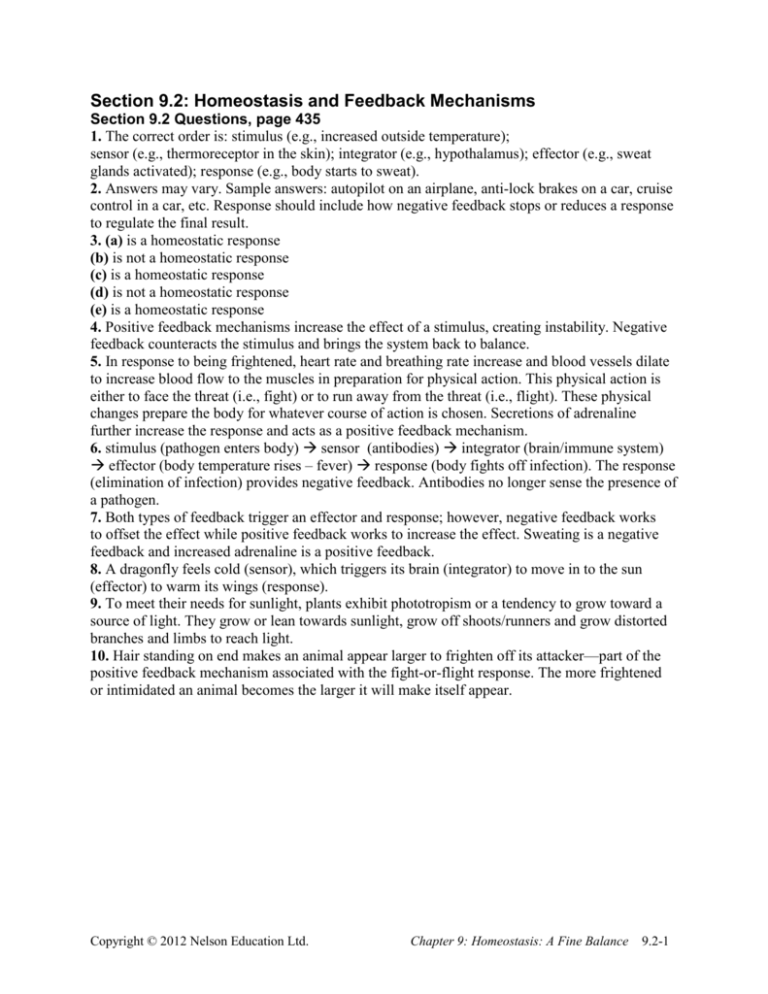
Section 9.2: Homeostasis and Feedback Mechanisms Section 9.2 Questions, page 435 1. The correct order is: stimulus (e.g., increased outside temperature); sensor (e.g., thermoreceptor in the skin); integrator (e.g., hypothalamus); effector (e.g., sweat glands activated); response (e.g., body starts to sweat). 2. Answers may vary. Sample answers: autopilot on an airplane, anti-lock brakes on a car, cruise control in a car, etc. Response should include how negative feedback stops or reduces a response to regulate the final result. 3. (a) is a homeostatic response (b) is not a homeostatic response (c) is a homeostatic response (d) is not a homeostatic response (e) is a homeostatic response 4. Positive feedback mechanisms increase the effect of a stimulus, creating instability. Negative feedback counteracts the stimulus and brings the system back to balance. 5. In response to being frightened, heart rate and breathing rate increase and blood vessels dilate to increase blood flow to the muscles in preparation for physical action. This physical action is either to face the threat (i.e., fight) or to run away from the threat (i.e., flight). These physical changes prepare the body for whatever course of action is chosen. Secretions of adrenaline further increase the response and acts as a positive feedback mechanism. 6. stimulus (pathogen enters body) sensor (antibodies) integrator (brain/immune system) effector (body temperature rises – fever) response (body fights off infection). The response (elimination of infection) provides negative feedback. Antibodies no longer sense the presence of a pathogen. 7. Both types of feedback trigger an effector and response; however, negative feedback works to offset the effect while positive feedback works to increase the effect. Sweating is a negative feedback and increased adrenaline is a positive feedback. 8. A dragonfly feels cold (sensor), which triggers its brain (integrator) to move in to the sun (effector) to warm its wings (response). 9. To meet their needs for sunlight, plants exhibit phototropism or a tendency to grow toward a source of light. They grow or lean towards sunlight, grow off shoots/runners and grow distorted branches and limbs to reach light. 10. Hair standing on end makes an animal appear larger to frighten off its attacker—part of the positive feedback mechanism associated with the fight-or-flight response. The more frightened or intimidated an animal becomes the larger it will make itself appear. Copyright © 2012 Nelson Education Ltd. Chapter 9: Homeostasis: A Fine Balance 9.2-1 11. Answers may vary. Answers should include: when the temperature of a room is lower than the set point (the temperature set on the thermostat) an electrical signal is sent to the regulator to turn on the furnace to increase the room temperature. Once the set-point is reached, the signal to the furnace is shut off and the furnace turns off. 12. Answers may vary. Sample answer: An example of a feed-forward system that our bodies use in homeostasis is in the pre-adaptation for exercise (i.e., preparing our bodies for movement by changing the activity of postural muscles and the vascular system in order to ready the body for movement). For example, moving the arm laterally shifts the centre of gravity laterally. This keeps us from falling over by compensating with a change in musculature to prepare for the movement. 13. Clotting of blood after an injury is an example of a positive feedback response and a negative feedback response. Initial chemical reactions produce enzymes that catalyze the subsequent chemical reactions until the fibrin (clotting factor) is formed. The effect of the initial stimulus is increased and is therefore a positive feedback response. Once the clot is formed, production of the enzymes is stopped in a negative feedback response that results in a return to homeostasis. 14. Positive feedback controls can be harmful if they continue uncontrollably. A fever is a positive feedback that pushes the temperature continually higher. Body temperature can reach extremes of 45 °C, at which point cellular proteins stop working (denature) and metabolism stops, ultimately resulting in death. 15. Answers may vary. Sample answer: /UU U T/I Copyright © 2012 Nelson Education Ltd. Chapter 9: Homeostasis: A Fine Balance 9.2-2
